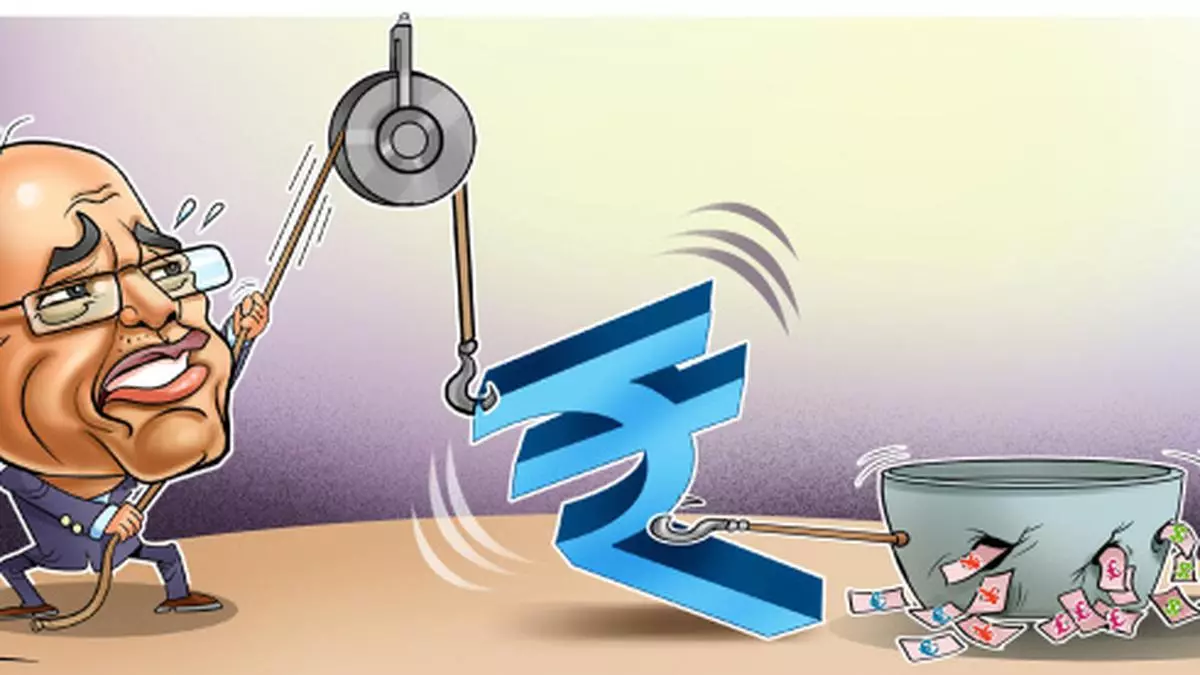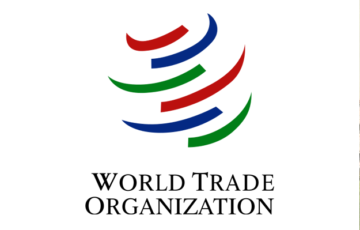EXCHANGE RATE SYSTEM
Concept of Exchange Rates
- The concept of exchange rates is central to international economics and finance, reflecting how much one currency can be exchanged for another. It is a critical aspect for countries engaged in global trade, affecting imports, exports, and economic stability. This detailed explanation will cover the fundamentals of exchange rates, focusing on India’s exchange rate regimes, objectives of exchange rate management, determinants of exchange rates, and the benefits and limitations of different exchange rate systems.
Exchange Rate Regimes in India
Central Bank’s Role
- The Reserve Bank of India (RBI), acting as the country’s central bank, oversees the exchange rate regime, establishing the functioning exchange rate of the Indian Rupee against other foreign currencies. This is essential for a globalized world where countries interact economically.
Objectives of Exchange Rate Management in India
Economic Reflection
- The primary objective is to ensure the external value of the currency accurately reflects the country’s basic economic fundamentals.
Volatility Reduction
- Another key goal is to minimize the volatility of the exchange rate, making economic outcomes more predictable.
Resilience to Shocks
- Maintaining a significant level of foreign exchange reserves is crucial for withstanding external economic shocks.
Determinants of the Exchange Rate in India
Inflation
- Inflation differentials significantly influence exchange rates by altering the purchasing power of currencies.
Interest Rate
- High-interest rates can lead to currency devaluation by increasing inflation over time.
Public Debt
- Large government debts compared to economic growth can deter foreign investment, leading to currency devaluation.
Political Stability
- Stable political environments attract foreign investments, appreciating the currency, whereas instability leads to depreciation.
Balance of Trade
- A positive balance of trade, with exports exceeding imports, results in a net inflow of foreign currency, appreciating the local currency.
Confidence or Speculation
- Market confidence and speculative activities can also impact exchange rates.
Exchange Rate Regimes in India
Floating or Flexible Exchange Rate
- A market-determined rate where supply and demand dictate the currency’s value. This system allows for more efficient market responses but exposes the economy to exchange rate volatility.
Benefits
- Adjustments in the balance of payments
- Unrestricted foreign exchange
- Market efficiency
- No need for large forex reserves
Limitations
- Exposure to volatility
- Potential for restricted economic growth
Fixed or Pegged Exchange Rate
- The government or central bank sets the exchange rate to a foreign currency or a commodity like gold. This system provides stability but can lead to economic misalignments.
Benefits
- Exchange rate stability
- Useful for developing economies
Limitations
- Potential reduction in foreign investment
- Risk of forex reserve shortages
- Limited monetary policy flexibility
Managed Floating Exchange Rate
- A hybrid approach where the central bank intervenes to stabilize the currency, aiming to reduce volatility while allowing some market determination of exchange rates.
Benefits
- Strong monetary policy
- Resilience to domestic economic impacts
Limitations
- Risk of competitive devaluation
- Financial system weaknesses
Concept of Effective Exchange Rates
- Effective Exchange Rates serve as crucial indicators for understanding the value of a nation’s currency against a collective of foreign currencies, specifically those of trading partners. These metrics are instrumental in shaping monetary and financial policies to align with the current economic conditions.
Nominal Effective Exchange Rate (NEER)
- The Nominal Effective Exchange Rate (NEER) is essentially an unadjusted weighted average rate at which the domestic currency trades against a basket of multiple foreign currencies. These foreign currencies belong to the nation’s primary trading partners, making NEER a pivotal factor in gauging international competitiveness within the foreign exchange market.
Characteristics and Calculation
- NEER represents the quantity of domestic currency required to purchase a unit of foreign currency.
- It acts as a trade-weighted currency index, reflecting the ability of a nation to compete on the international stage.
- The Reserve Bank of India, for instance, calculates the NEER of the Indian rupee in relation to six other major currencies and 40 trading partners.
- A notable aspect of NEER calculation is the selection of a base year, which for India has been updated to 2015-16. This adjustment was made to account for macroeconomic shifts and structural changes within the Indian economy.
Real Effective Exchange Rate (REER)
Definition and Importance
- Moving beyond NEER, the Real Effective Exchange Rate (REER) adjusts for international and domestic inflation rates, providing a more accurate representation of a currency’s value relative to a group of significant other currencies.
Function and Implications
- REER is calculated based on the trade balances and weights assigned to each of the country’s trading partners, offering a measure of global competitiveness.
- An increase in REER signifies that a country’s imports are becoming cheaper, while its exports grow more expensive, potentially impacting trade balance and economic health.
- The adjustments made in REER take into account the domestic inflation, thus equating it to NEER when inflation rates are factored into the calculation.
- A rising REER suggests a diminishing competitive edge, indicating that a nation’s goods and services are becoming less attractive on the global market due to higher relative prices.
| Feature | NEER | REER |
| Definition | Shows the relative value of the domestic currency when compared to other foreign currencies. | Shows the inflation-adjusted value of the currency when compared to other major currencies of a trading partner. |
| Inflation Adjustment | Does not adjust for inflation. It is influenced by the difference in inflation rates between the country and its trading partners. | Adjusts for inflation differentials, eliminating the effect of currencies-specific inflation and focusing on exchange rate differential alone. |
| Basis of Calculation | Calculated against a basket of currencies. | Calculated on the basis of NEER, incorporating inflation adjustments to provide a more accurate measure. |
| Focus | Focuses on the relative strength or weakness of a currency against a basket of foreign currencies without considering inflation rates. | Focuses on the value of a currency adjusted for the inflation differential, offering a more accurate representation of its value. |
| Accuracy in Measurement | May not provide an accurate measurement due to inflation differentials. | Considered a more accurate measure as it is adjusted for inflation, thus providing a better assessment of a currency’s real value. |
| Influence of Inflation Rates | Influenced by the difference in inflation rates between the country and its trading partners, which can distort its accuracy. | Attempts to neutralize the influence of inflation rates, making it a more stable and reliable measure of currency value. |
Liberalised Exchange Rate Management System (LERMS)
- The Liberalised Exchange Rate Management System (LERMS) was a significant shift in India’s approach to exchange rate management, introduced based on the recommendations of the Sri Rangarajan committee and implemented on March 1, 1993. It represented a transitional phase towards a market-determined exchange rate by adopting a dual exchange rate system.
Implementation and Mechanism
- Under LERMS, exporters were allowed to retain 60% of their foreign exchange earnings at market-determined rates, while the remaining 40% had to be surrendered at a rate fixed by the government. This system required the Reserve Bank of India (RBI) to purchase 40% of the foreign exchange earnings from exports and remittances at the official rate, aiming to gradually liberalize the foreign exchange market.
Features of LERMS
- Market-determined Exchange Rate: The rupee’s exchange rate was to be set entirely by market forces of demand and supply.
- Resident Foreign Currency Account (RFCA): NRIs were enabled to open RFCAs to deposit foreign currencies brought into the country, enhancing capital inflow flexibility.
- US Dollar as Intervention Currency: The RBI retained the right to buy and sell the US dollar to dealers at its discretion, aiding in market stability.
Concept of Devaluation of a Currency
- Devaluation refers to a deliberate downward adjustment of a currency’s value in a fixed exchange rate system by the country’s central bank. This action adjusts the currency’s value against one or more foreign currencies.
Reasons for Devaluation
- Boosting Exports: By making exports cheaper, devaluation can improve a country’s balance of trade.
- Competitive Devaluation: Countries may devalue their currencies to make their exports more competitive internationally.
- Reducing Trade Deficits: Devaluation can help lower the cost of exports relative to imports, aiming to reduce trade imbalances.
- Easing Sovereign Debt: By reducing the domestic currency’s value, devaluation can lower the real cost of fixed debt repayments.
Disadvantages of Devaluation
- Inflation: Essential imports become more expensive, leading to inflation.
- Reduced Purchasing Power: The domestic currency’s purchasing power decreases, affecting consumers and businesses.
- Eroding Investor Confidence: Frequent devaluations may deter foreign investment, destabilizing the economy.
- Impact on Foreign Debt: Entities with foreign currency debt face higher repayment costs.
Concept of Depreciation of a Currency
- Depreciation occurs in a floating exchange rate system, where the currency’s value changes daily based on market forces of demand and supply without direct government intervention.
Factors Driving Currency Depreciation
- Decline in Exports: Reduced export revenues lead to a decrease in currency demand.
- Increase in Imports: A surge in imports can lead to trade deficits, weakening the currency.
- Monetary Policy: Central bank policies affecting interest rates can influence capital flows and currency value.
- Open Market Operations: Central bank actions in foreign exchange markets can directly affect currency value.
Impact of Depreciation
- Increased Cost of Imports: As the currency value falls, the cost of imports rises, potentially leading to inflation.
- Discouraging Foreign Investment: Depreciation can deter foreign investors due to potential losses in currency conversion.
- Reduced Purchasing Power: The domestic currency’s lower value decreases its purchasing power internationally.
Devaluation vs Depreciation
| Attribute | Devaluation | Depreciation |
| Definition | A planned reduction in the value of a currency with respect to foreign currencies. | A fall in currency value due to the free play of market forces. |
| Objective | To promote exports and reduce imports, making domestic goods cheaper for foreign buyers and foreign goods more expensive for domestic buyers. | Depreciation does not have a direct objective but can result in a current account deficit and potentially a fiscal deficit due to increased cost of imports and less competitive exports. |
| Exchange Rate Regime | Connected to a fixed exchange rate system where the government or central bank sets the currency value. | Associated with a managed or floating exchange rate regime where the currency value is determined by market forces. |
| Initiation | Deliberately undertaken by the government or the central bank to adjust the economic policy. | Occurs naturally through changes in supply and demand in the currency market. |
| Effects on the Economy | Has immediate short-term effects on the economy by making exports cheaper and imports more expensive. | Can have both short-term and long-term impacts on the economy, influencing inflation, investment, and overall economic health. |
| Market Forces | Not directly influenced by market forces since it is a policy decision. | Directly influenced by market forces such as changes in trade balances, inflation rates, and differences in interest rates. |
Concept of Currency Appreciation
- Floating Exchange Rate Regime: Currency appreciation is a phenomenon occurring within a floating exchange rate system where market forces solely determine the currency value.
- Market Dynamics: Daily changes in a currency’s exchange rate are influenced by its demand and supply in comparison to foreign currencies.
- Cause of Appreciation: Appreciation happens when there’s a decrease in the currency’s supply coupled with an increase in demand in the market.
- Effects of Currency Appreciation:
- Cheaper Foreign Goods: Appreciation makes imported goods relatively less expensive, impacting domestic consumption preferences.
- Increased Purchasing Power: The currency becomes stronger in foreign markets, enhancing the buying capacity of individuals and businesses abroad.
- Decrease in Exports: As domestic goods become costlier on the international market, exports tend to reduce, potentially affecting domestic producers negatively.
Depreciation vs Appreciation
| Aspect | Depreciation | Appreciation |
| Impact on Exports | Makes exports cheaper. This can increase demand for a country’s goods abroad, as they become more competitively priced. | Makes exports costlier. This can decrease demand for a country’s goods abroad, as they become less competitively priced. |
| Impact on Imports | Makes imports costlier. This can decrease the demand for foreign goods, as they become more expensive. | Makes imports cheaper. This can increase the demand for foreign goods, as they become less expensive. |
| Purchasing Power | Decreases the purchasing power of the currency. Domestic consumers and businesses can buy less with the same amount of money, especially in terms of imported goods and services. | Increases the purchasing power of the currency. Domestic consumers and businesses can buy more with the same amount of money, especially in terms of imported goods and services. |
| Impact on Inflation | Can cause inflation. As the cost of imports rise, the prices of goods and services in the domestic market can also increase, leading to overall inflation. | Can mitigate inflation. As the cost of imports decrease, the prices of goods and services in the domestic market may also decrease or increase at a slower rate, potentially leading to lower inflation. |
| Impact on Domestic Production | Can benefit domestic production. As imports become more expensive and exports become more competitive, it can encourage domestic production and consumption. | Hurts domestic production. As imports become cheaper and exports less competitive, it can discourage domestic production and increase reliance on imported goods. |
Current Wave of Dedollarization
- Dedollarization refers to the process of reducing reliance on the US dollar in international trade and finance. This trend has been accelerated by geopolitical tensions, such as sanctions and the exclusion of countries from the SWIFT financial messaging service, which have led some nations to seek alternatives to the dollar to preserve their economic sovereignty.
Efforts and Examples
- Russia and China have been at the forefront of dedollarization, especially through the BRICS framework, following geopolitical tensions and sanctions.
- India has explored trading in domestic currencies, such as through rupee-ruble and rupee-riyal trades, to bypass the dollar in its international transactions.
Concept of Currency Revaluation
- Currency revaluation is an upward adjustment of a currency’s value under a fixed exchange rate system, relative to gold or another foreign currency.
Reasons and Impact
- Revaluation might be triggered by changes in interest rates, political instability, or market speculation.
- It can decrease exports by making them less competitive and impact the balance of trade negatively, although it makes imports cheaper and can lead to inflation.
Currency War
- A currency war involves countries competitively devaluing their currencies to boost exports and gain a competitive edge in international markets.
Consequences
- While aimed at economic stimulation, currency wars can lead to inflation, reduce purchasing power, and deter foreign investment.
- Such policies can escalate to increased protectionism and trade barriers, affecting global trade negatively.
IMF Special Drawing Rights (SDR)
Background
Post the failure of the Bretton Woods system, the IMF introduced SDRs as a form of international reserve asset, an alternative to gold and US dollars, to support countries facing balance of payments crises.
Function and Importance
- The SDR’s value is based on a basket of international currencies, providing a more stable asset for international reserves.
- The quota system within the IMF, denominated in SDRs, determines a country’s voting power and access to financing.
- For India, SDRs, along with other assets, form a part of its foreign exchange reserves, showcasing its integration and standing within the global financial architecture.
Concept of Purchasing Power Parity (PPP)
- Purchasing Power Parity (PPP) is a fundamental economic theory that serves as a method for comparing the currencies of different countries through a “basket of goods” approach. This theory facilitates a deeper understanding of the relative value of currencies, economic productivity, and standards of living across nations.
Understanding PPP
- The essence of PPP lies in measuring the amount of currency required in one country to purchase a standard set of goods and services that could be bought for a certain amount in another country. This comparison aims to establish a theoretical exchange rate at which the same quantity of goods and services can be purchased across different nations, thereby indicating the real value of currencies beyond nominal exchange rates.
Economic Significance
- Comparing Economic Productivity: By adjusting economic outputs using PPP, analysts can compare the real productivity levels of different countries, accounting for differences in living costs and inflation rates.
- Assessing Standards of Living: PPP allows for a more accurate comparison of living standards between countries by reflecting what consumers can actually buy with their incomes in their local economies.
- Adjusting GDP for International Comparison: PPP adjustments are made to nominal Gross Domestic Product (GDP) figures to obtain a more accurate reflection of the real economic size and output of countries, considering the cost of living and inflation rates.
PPP and Gross Domestic Product (GDP)
- Nominal vs. PPP-adjusted GDP: While a country’s nominal GDP might position it at a certain rank globally, adjusting for PPP can provide a different perspective, often highlighting a higher real economic output and purchasing power. This adjustment is crucial for understanding the true scale and efficiency of an economy.
- Case Study – India: India serves as a compelling example, where its rank in terms of nominal GDP significantly improves when adjusted for PPP. This adjustment reflects India’s high purchasing power, indicating that despite lower income levels in nominal terms, the actual capacity of its economy is substantially larger when considering the cost of living and local prices.
UPSC PREVIOUS YEAR QUESTIONS
1. With reference to the Indian economy, consider the following statements: (2022)
1. An increase in Nominal Effective Exchange Rate (NEER) indicates the appreciation of rupee.
2. An increase in the Real Effective Exchange Rate (REER) indicates an improvement in trade competitiveness.
3. An increasing trend in domestic inflation relative to inflation in other countries is likely to cause an increasing divergence between NEER and REER.
Which of the above statements are correct?
(a) 1 and 2 only
(b) 2 and 3 only
(c) 1 and 3 only
(d) 1, 2 and 3
2. Which one of the following is not the most likely measure the Government/RBI takes to stop the slide of the Indian rupee? (2019)
1. Curbing imports of non-essential goods and promoting exports.
2. Encouraging Indian borrowers to issue rupee denominated Masala Bonds.
3. Easing conditions relating to external commercial borrowing.
4. Following an expansionary monetary policy.
3. Recently, which one of the following currencies has been proposed to be added to the basket of IMF’s SDR? (2016)
(a) Rouble
(b) Rand
(c) Indian Rupee
(d) Renminbi
4. Consider the following statements: (2019)
1. Purchasing Power Parity (PPP) exchange rates are calculated by comparing the prices of the same basket of goods and services in different countries
2. In terms of PPP dollars, India is the sixth largest economy in the world.
Which of the statements given above is/are correct?
(a) 1 only
(b) 2 only
(c) Both 1 and 2
(d) Neither 1 nor 2










